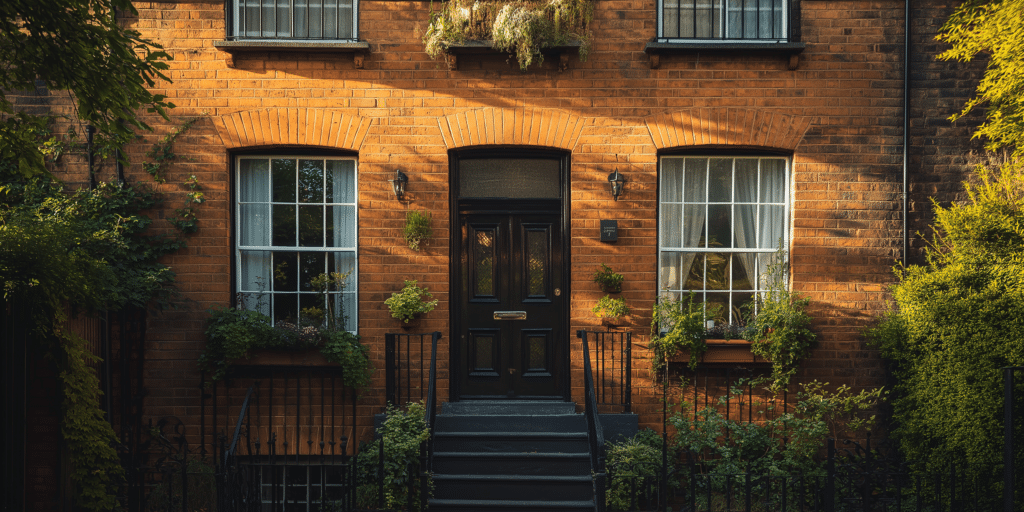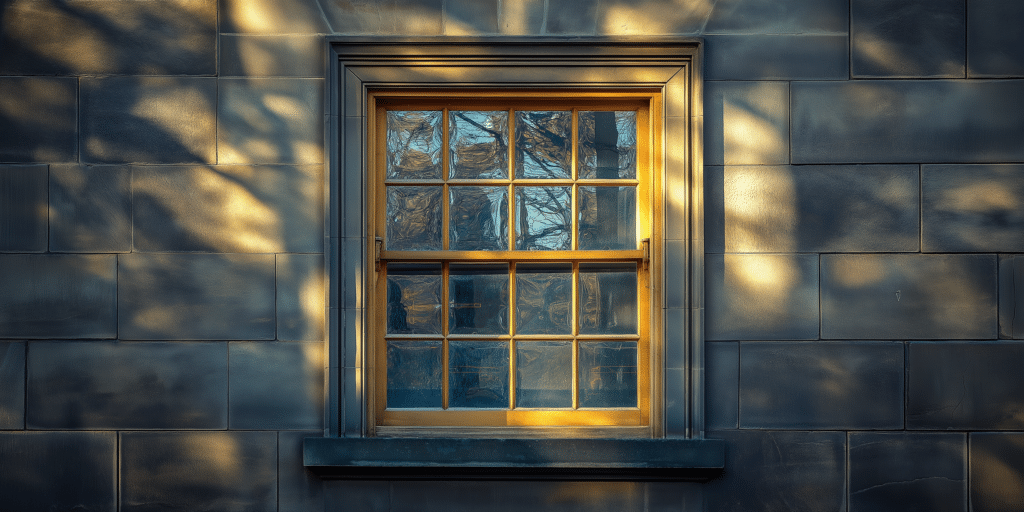Introduction to Sash Window Anchoring

Proper sash window anchoring is crucial for preserving structural integrity and ensuring the window’s security within its frame. Anchoring helps minimise movement, prevent draughts, and protect against moisture infiltration and potential safety hazards. For homes with historical or double-hung sash windows, secure anchoring is functional and essential for maintaining aesthetic value. Effective anchoring also improves energy efficiency, reducing noise and rattling—a frequent issue in older properties.
Common issues include timber frame wear, misalignment, seasonal expansion and contraction, and compliance with historic preservation standards. These factors can lead to loosening frames, draughts, and moisture seepage, ultimately increasing repair needs. Traditional joinery techniques should be combined with modern materials to meet these challenges while preserving the authenticity of heritage windows.
Specialised techniques, like concealed fixings or countersunk screws, ensure the sash sits flush within the frame, which maintains the traditional look while bolstering security and using reinforced timber or fibreglass within the frame to enhance durability, especially in harsher climates.
Types of Anchors Used in Sash Windows
- Screw-in Wood Anchors: These anchors are ideal for securing sash windows in wooden frames. Precision placement and pre-drilling prevent wood splitting, especially with hardwoods or dense timber. Corrosion-resistant options are recommended to enhance longevity in damp climates.
- Steel and Masonry Anchors: For heavier windows, especially in masonry or brick walls, steel anchors provide robust support that reduces frame separation under load. Steel anchors are crucial in listed properties, as they are durable without compromising aesthetics.
- Adjustable Anchoring Solutions: Cam-lock anchors allow fine-tuning, accommodating minor frame shifts, which reduces the need for constant tightening. Experts recommend adjustable anchors as an effective solution for historic homes subject to structural shifts.
- Choosing the Right Anchor Type: Consider the frame material, wall type (brick, timber, or plaster), and environmental conditions. To prevent rust, materials like galvanised steel are preferred in coastal regions.
Step-by-Step Guide to DIY Sash Window Anchoring
Engaging in DIY sash window anchoring requires careful preparation and the right tools to ensure secure and long-lasting results. A structured approach improves the installation quality and contributes to the window’s structural stability.
Preparation and Tools Required
Essential tools for anchoring sash windows include a power drill, precision screwdriver, wood screws, and a spirit level to ensure accurate placement. Given the nature of the materials, it’s advisable to use corrosion-resistant screws. For hardwood frames, wood glue can enhance stability. Safety glasses and a dust mask are also recommended to ensure safety during installation.
Assessing the Frame and Wall Type
Before starting, assess the wall type—timber, masonry, or plaster—and the condition of the sash window frame. Older frames may require reinforcement or filler to prevent splitting or cracking during drilling. For frames in historical homes, you may need to opt for reversible anchoring techniques to maintain historical accuracy.
Installing Anchors Properly
Position the anchors evenly along the jambs and secure them with countersunk wood screws. Countersunk screws allow the anchor heads to sit flush with the frame, maintaining an even aesthetic. To avoid strain, do not overtighten screws; pre-drilling a pilot hole in denser woods is recommended to prevent splitting. Once placed, each anchor should be tested for tightness.
Checking and Testing
After installation, gently push against the sash frame to test each anchor’s hold. The installation has likely succeeded if the sash moves smoothly within the frame and remains stable when opened or closed. Regular testing ensures the anchoring holds up over time, reducing future maintenance requirements.
Professional Installation vs. DIY Anchoring

Benefits of Professional Anchoring Services
Professional installation services benefit from specialised tools and experience. Experts often use heavy-duty drills and industrial adhesives for long-lasting anchoring, which is especially useful in properties with older, fragile frames. Additionally, professionals understand local building codes and historic preservation standards, ensuring compliance with regulations.
Cost and Time Comparisons
While DIY anchoring is often more affordable, it may lack the precision and durability provided by professional services. Professional installation reduces time by nearly 40% on average due to advanced tools and techniques. Expert installation may be a regulatory requirement for listed or heritage buildings, balancing cost with legal compliance.
Understanding DIY Limitations
Complex sash window designs, such as curved or triple-hung windows, can present challenges for DIY installers. With these intricate models, professionals have the expertise to manage heritage compliance, especially in regions like the UK with stringent preservation standards.
When to Call in Experts
If your sash windows are part of a listed building, calling in professionals may be necessary to preserve architectural integrity. Expert installation ensures anchoring techniques do not detract from the window’s historical significance, which is particularly valuable for properties with original Georgian or Victorian sash designs.
Maintenance Tips for Anchored Sash Windows
Seasonal Inspections
Conducting seasonal inspections on anchored sash windows is essential to address issues arising from changing weather conditions. Look for signs of loosening or corrosion and ensure that all anchors are securely positioned.
Cleaning and Lubrication
Maintaining clean and lubricated anchors can prolong the lifespan of the installation. Applying a silicone-based lubricant to moving parts prevents rust, while regular cleaning removes dust and grime that may impact smooth operation.
Dealing with Expansions and Contractions
Wooden frames naturally expand and contract with temperature changes. Adjustable anchors, such as cam-locks, can provide flexibility to alleviate pressure on the frame during seasonal shifts, preserving the sash’s integrity.
Replacing Worn Anchors
Regularly inspecting for rust or damage allows you to replace worn anchors before they affect the window’s stability. Consider using stainless steel or galvanised options for long-term durability, especially if the window is exposed to high-humidity environments.
Common Issues and How to Address Them
Loose Anchors
Some anchors may loosen over time. Tightening them periodically helps maintain a secure frame; in timber, applying wood glue can add extra support. For best results, ensure you use anchors suited to your frame material.
Corrosion and Rust
Corrosion is a common issue, particularly in coastal or high-humidity areas. A rust-preventive coating on metal anchors can prolong their lifespan, and opting for marine-grade stainless steel provides better resistance in harsh conditions.
Frame Damage
Over-tightening screws can crack frames. Minor cracks may be fixed with wood filler, but more significant damage may necessitate a reinforcement or professional assessment to avoid further structural issues.
Signs of Deterioration
Regularly inspect for cracks, rust, or shifting within the frame to catch early signs of deterioration. Addressing issues promptly helps maintain the sash window’s functionality and longevity.
Expert Tips for Long-Lasting Window Stability

Anchor Placement Strategies
Strategically placing anchors at load-bearing points within the sash frame distributes pressure evenly. This placement reduces strain on individual points and prolongs the stability of the entire sash window.
Selecting Weatherproof Materials
High-grade stainless steel or galvanised anchors are ideal for coastal environments or regions with high rainfall, as they resist corrosion. Pairing these anchors with waterproof sealants provides increased durability.
Seasonal Adjustments
Wood expansion and contraction can affect anchor stability. Checking and adjusting anchors at the start of each season ensures they remain secure and functional despite environmental changes.
Using Reinforcement Hardware
For larger sash windows or those in high-traffic areas, additional hardware like T-brackets or corner brackets provide added reinforcement, reducing potential wear and enhancing security.
Regulatory and Preservation Considerations for Historical Sash Windows
Historic Preservation Standards
In the UK, listed buildings must follow Historic England’s standards, which mandate that preservation methods be minimally invasive and maintain the building’s original appearance. These regulations protect historical authenticity while allowing for necessary updates.
Special Anchoring Needs for Heritage Windows
Heritage sash windows often require reversible anchoring techniques to avoid altering the window frame. This approach aligns with conservation standards and maintains the original architecture.
Permitting Requirements
Modifications to Grade I or II listed properties may require permission from local planning authorities. Adhering to these guidelines ensures compliance with preservation laws and maintains the property’s historical value.
Conservation Materials and Techniques
Materials like brass screws and non-invasive methods, such as concealed hinges, allow for anchoring that respects the heritage design. These conservation techniques are precious in maintaining historical sash windows’ integrity.
Troubleshooting Guide for DIY Anchoring Issues
Anchor Not Holding
If an anchor does not hold, using longer or wider screws can often provide a firmer attachment. Ensure the wall or frame material supports the anchor to prevent frequent loosening.
Frame Shifts After Installation
Wooden frames may shift due to seasonal swelling. Anchors with some flexibility help prevent cracking during these natural adjustments, maintaining structural stability.
Difficulty Drilling Into Frame Material
For dense materials like hardwood, a high-torque power drill or masonry drill bits may be necessary to drill effectively and ensure a proper hold for the anchor.
Handling Weather-Induced Loosening
Regular inspections and anti-corrosion treatments for anchors are essential in damp or coastal areas to address weather-induced loosening and prevent damage.
Additional Resources and Expert Recommendations

Best Brands and Products
Renowned brands like Fischer, Hilti, and Rawlplug offer a range of anchoring solutions, from corrosion-resistant anchors to durable screws. Professionals trust these products for their quality and durability.
Online Tutorials and Guides
Platforms like YouTube offer valuable DIY guides with step-by-step demonstrations from sash window restoration experts. These resources can provide additional confidence for homeowners undertaking anchoring projects.
Professional Organisations for Window Restoration
The Society for the Protection of Ancient Buildings (SPAB) and the Historic Houses Association (HHA) offer support and guidance for those managing sash windows in heritage properties, ensuring restoration aligns with preservation standards.
Maintenance Checklist
A downloadable checklist covering key maintenance points, including frame alignment, anchor stability, and lubrication, can help homeowners keep sash windows in optimal condition.
Final Thoughts on Sash Window Anchoring
Securely anchoring sash windows is more than a functional requirement—it is essential for maintaining the window’s performance, longevity, and historical integrity. Whether you’re a DIY enthusiast or a property manager of a listed building, understanding and applying the appropriate anchoring techniques can significantly enhance sash windows’ durability and aesthetic value.
From seasonal maintenance to professional installation tips, each section of this guide aims to provide a comprehensive understanding of the best practices in sash window anchoring. Regularly assessing your window’s anchoring, choosing suitable materials, and following preservation standards ensure that sash windows remain valuable on any property.
For those working on historic properties, balancing structural improvements with preservation guidelines is crucial to honour the architectural legacy. Engaging experts for specialised installations in these cases can help meet both aesthetic and regulatory requirements. DIY anchoring and maintenance can be practical and cost-effective for modern installations if approached correctly.
Ultimately, anchoring sash windows, whether for function or historical preservation, contributes to a property’s overall energy efficiency, security, and timeless charm. If you’re ready to tackle your sash window project or consult with a professional, anchoring provides a worthwhile investment for the future stability and aesthetic appeal of these classic architectural features.




